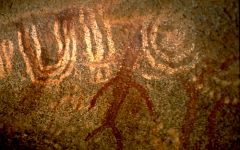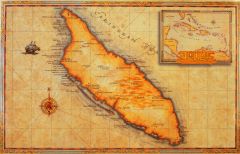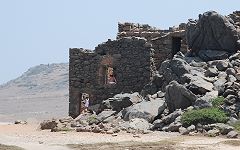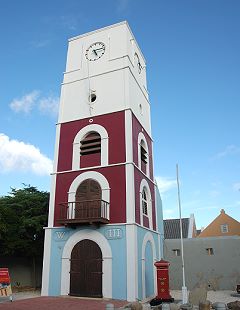

°F
-
°C
more weather...
Live Webcams
The History of Aruba
Before the arrival of Columbus and the subsequent European explorers who charted the Caribbean islands, Aruba was settled by various subgroups of the Amerindian Arawaks. Today, archaeological digs in the north and northwest part of Aruba confirm that the Amerindians were a strong culture. Today their legacy comprises cave drawings and petroglyphs, most common in the caves along the north shore, as well artifacts and place-names such as Bushiri, Turibana and Guadirikiri (probably names of chiefs important to the tribes).
In the late 15th century
the Spanish explorer Alonso de Ojeda explored Venezuela and the nearby islands of the Caribbean. He is credited with "discovering" Aruba in 1499, although no real evidence of his landing on the island exists. Nevertheless, the island was soon under heavy Spanish scrutiny. The Spaniards, as was their wont throughout the Caribbean, began the process of enslavement and religious conversion. They set up garrisons and ranches on Aruba, and used the larger island of Curacao as an administrative center for their interests in the immediate area.
The Eighty Year War
between the Dutch and Spain, and their allies, ended in 1636, and the Spanish relinquished the islands of Aruba, Bonaire, and Curacao to the Dutch, who ruled them under charter of the Dutch west India Company (WIC). The next 100 years or so saw an increase in commerce in the area as well as an allegiance change. Aruba was aligned with Britain from 1805 until 1816, a result of the Napoleonic Wars, but reverted back to the Dutch in 1816. The island has been affiliated with Holland ever since.
The 19th century
was a time of great conflict in South America in general and in Venezuela in particular. Revolutions in that country drove thousands refugees elsewhere, many to Aruba, and Curacao. Gold mining on the island began in earnest after 1824 and continued to be a strong industry until the early 20th century, when the advent of the first world war rendered the raw materials needed to mine the rock unavailable. Gold, along with the primary export of aloe (at one time Aruba produced 70% of the world's crop), created a stable and thriving economy in Aruba.
Not long afterwards, however, in 1924, another valuable commodity replaced it, black gold --oil. Aruba became home to one of the world's largest refineries. The strength of the economic boom that followed made San Nicholas into a major commercial center and the island's second largest city. To this day, Aruba's two main industries have been oil and tourism, and when the refineries were closed down in 1985 due to the worldwide glut in petroleum, the emphasis on tourism became especially important. Even after oil refining was resumed in 1991, the island continued to invest heavily in tourist development, and new projects are still going on all the time.
For complete history overview, please visit the website: www.historiadiaruba.aw



